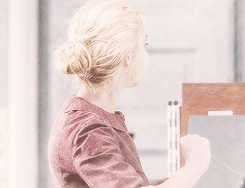Victorian Fashion
Jul 12, 2014 15:38:16 GMT -5
Post by Paige on Jul 12, 2014 15:38:16 GMT -5
Victorian Fashion
Women's Fashion
Princess sheath garments without a waist seam with bodice and skirt cut in one have come into style. The Princess line sheath has a bodice line similar to the very tight fitting cuirasse bodices which had been getting longer and longer in recent years; the cuirasse bodices reach the thighs. The cuirasse bodice is corset-like and dips even deeper both front and back extending well down the hips creating the look of a body encased in armor. In the year 1880, the two ideas, Princess Style and Cuirasse Bodice, merged so that the whole dress is now in Princess line style with shoulder to hem panels. The silhouette is slim and elongated by the train.

While the bustle disappeared shortly, as the Princess Style and Cuirasse Bodice flourished, in 1883, it came back with a vengeance. The skirts remain slim in the front and on the sides, but the back balloons out over a bustle framework. The line is still vertical, but the bodice shortens back up to above the hip at the sides. Beadwork and braid forming motifs now cover the flat portions of garments. The new bustle has minimal drapery compared to the previous bustle and is more fitted with a much flatter front.


While the bustle disappeared shortly, as the Princess Style and Cuirasse Bodice flourished, in 1883, it came back with a vengeance. The skirts remain slim in the front and on the sides, but the back balloons out over a bustle framework. The line is still vertical, but the bodice shortens back up to above the hip at the sides. Beadwork and braid forming motifs now cover the flat portions of garments. The new bustle has minimal drapery compared to the previous bustle and is more fitted with a much flatter front.

Men's Fashion
Victorian gentlemen wear a wide variety of vests in almost every combination of cut, color and cloth imaginable. As silk is relatively inexpensive, men often wear extremely fancy silk vests even during the day. Many men even wear their coats buttoned only with the top button, thereby allowing more of their vest to be seen.
Recently, wool and cotton vests in more conservative colors have become more common for day wear. Trousers sit at or just below the navel level. Men wear trousers that have stripes and sometimes checks along with suspenders, braces of leather, or canvas to hold their trousers in place.

Men wear band collar shirts and for dress occasions add a separate collar and cuff. Also, some shirts have a removable bib front, which is reversible to allow a man to hide any unsightly stains. Their coats are of fitted styling with a middle seam directly above the coat pockets. Top Hats are worn for parties and formal events, but also worn as day wear by the established gentleman.
A variety of other hat styles persist, including the wide-brimmed “wide awake” style and the flat topped “pork pie” (deplorable, really).

Children's Fashion
Pinafores in white muslin, checked gingham, black silk or sateen, are an accepted part of girls' dress, and may also be worn by very small boys. Long hair, brushed back straight and smooth under a hairband, if curls cannot be achieved, is acceptable. Clothing style similar to that for grown women is also popular for little girls, though their bodices are not so tightly fitted.

The knickerbocker suit, worn by boys until the age of ten, consists of full knickerbockers, closes under the knee and a waistcoat and jacket over a white frilled shirt. Sailor suits are also very popular for young boys, coming in a variety of styles. The Middy Suit and Jack Tar have become very popular in recent years.


